Ming Muang Temple ‘See the town pole of Nan Province.’
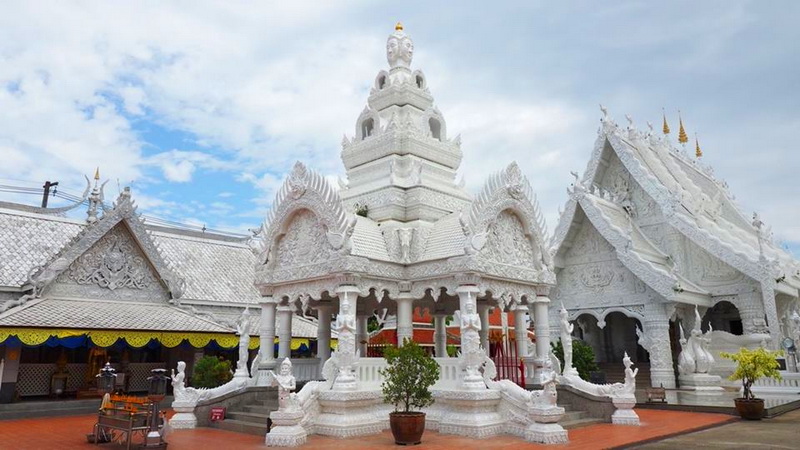
Let’s not leave Nan Province unless you visit this temple.
Ming Muang Temple is the temple that stores the town pole of Nan Province. The pole is made of log and quite large.
Ming Muang temple was once an abandoned temple where the city pillar, made of 2 huge trunks, was found in the ruins of its vihara. Chao Anantaworaritthidej, the Nan ruler, established the temple around 1857 and named it ‘Wat Ming Muang’ after the name of the city pillar ‘Sao Ming Muang.’ (Sao means pillar) The ubosot was pulled down in 1984 and the new one was constructed in the style of the contemporary Lanna architecture. (Lanna refers to the northern part of Thailand)
The outstanding features of the new ubosot include the fine carved relieves and sculptures, by Chiang Saen artists, on the outside of the building; the mural paintings, by contemporary local artists, depicting Nan people’s every life; and the 3-meter-high city pillar, standing in the pavilion in front of the ubosot.
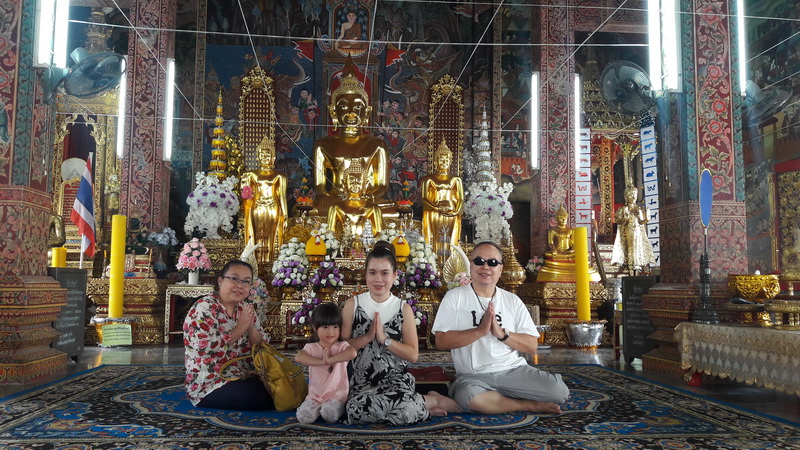

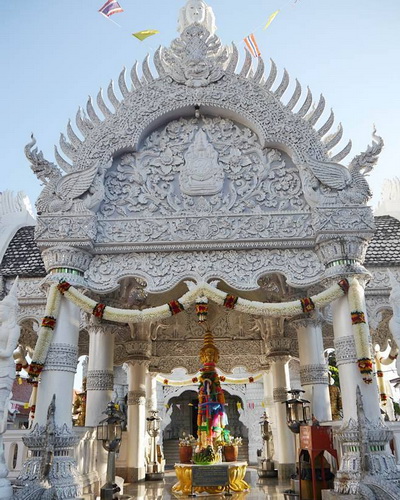
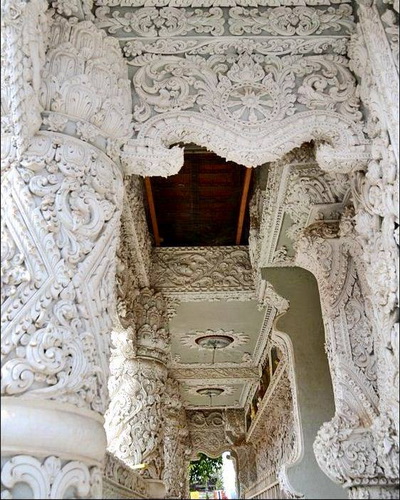
The city pillar’s base is wooden carved and decorated with gold leaves. The top of the pillar is carved in the image of 4-faced Brahma; each face is entitled Metta, Karuna, Mudita, and Upekkha respectively. The historical sites and the antiques in the temple Sculpted and decorated with gold leaves, the principle Buddha image is influenced by a type of art in northern Thailand called Chiang Saen Singha Nueng.
The image is identified to be as old as 400 years and has been renovated up to 4 times already. In the latest renovation, the craftsman had extended the size of the image to the lap width of 80 inches. The image is called “Luang Pho Phra Sri Ming Muang”. This Buddha image is considered an excellent example of the early Chiang Saen Singha Nueng image because of its beautiful topknot, delicately carved from a gemstone found only in Lanna.
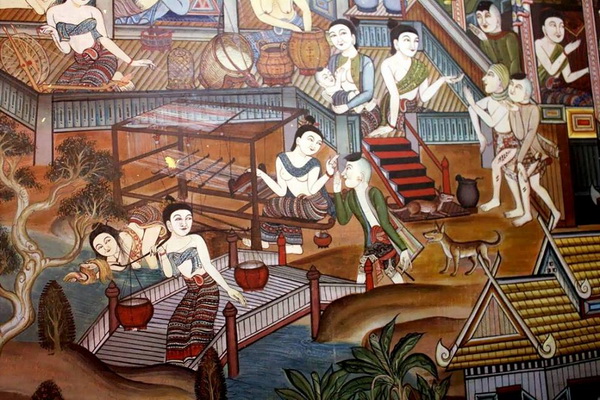

Ming Muang Temple is well-known for white-grey architectures around the whole area: vihara, pavillion, ubosot etc. The ubosot is the most beautiful, as it’s Lanna contemporary style. It was reformed by the abbot, as the old one was badly ruined. Craftsmen from Chiangsan were the people who got their hands on lime modelling. But the construction was under the care of Nan local workers. There are many murals, created by Nan skilled artist Mr.Suradet Kalasen, inside the ubosot. All murals tell the history of Nan Province.
This is a temple that you should step in first, at least before leaving the province. The temple is a great pride of Nan villagers. Give yourself a chance of worshipping the town pole. Then take photos around the temple.
How to get there
Ming Muang Temple is located on Suriyapong Road, Nai Wiang District, Muang County, Nan Province. Or, to be more specific, it’s on the opposit side of Rachanubal School.
It will be good to get there by your own car, as you won’t have to soak your body with you sweat in the middle of sunlight. Just use the Highway 101(Yantrakijkosol Road), in order to reach Nan downtown. Then, after reaching Nan downtown, just turn right into Suriyapong Road. Keep going a little bit further. Then you will find the temple on your right side. If you do not have car, we recommend another way for more comfortable and do not worry for getting lost, please contact us to arrange the private tour package to you.
Opening hours and Entrance fee : Opens daily from 7 am until 5 pm. Admission is free.
Note : Wheelchair user is accessible for ground temple.
Our services :
Ming Muang Temple Map


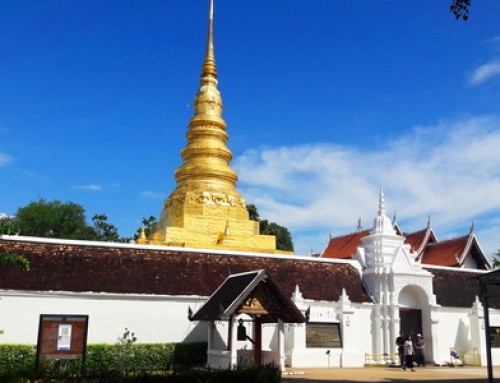
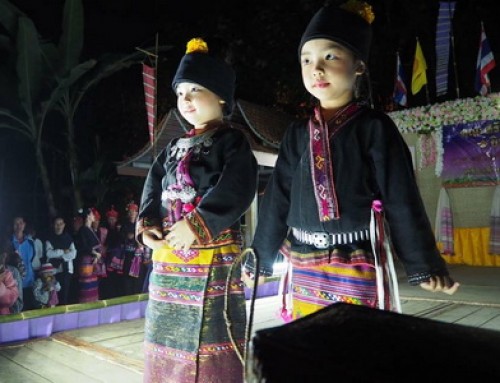
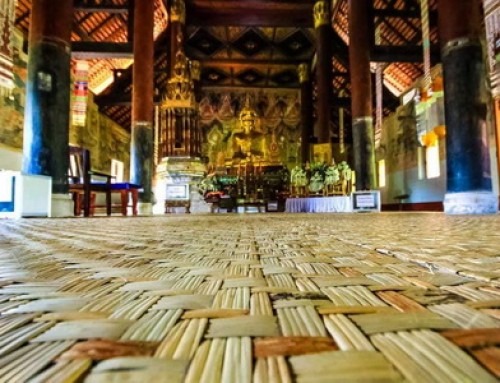
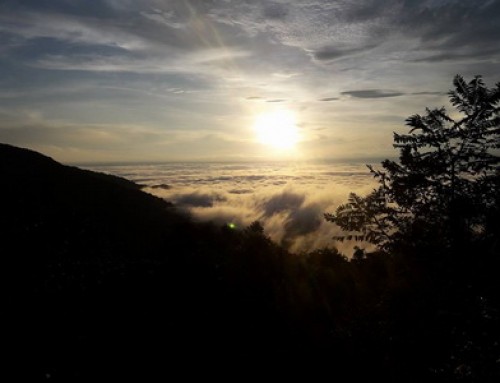


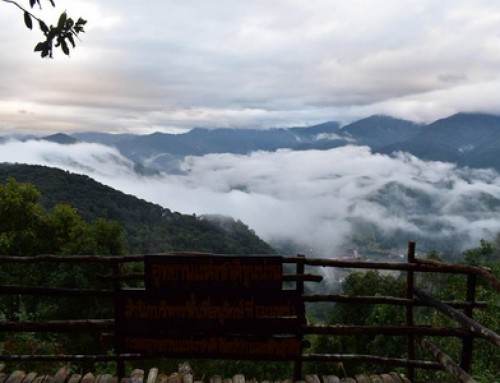
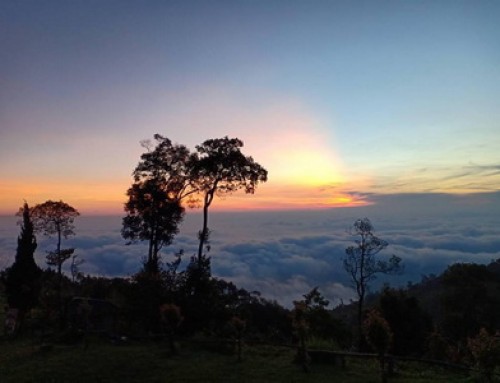

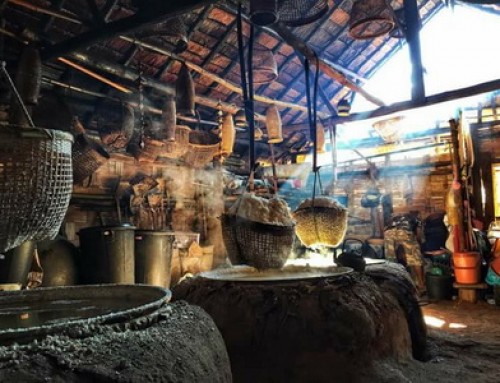
Leave A Comment